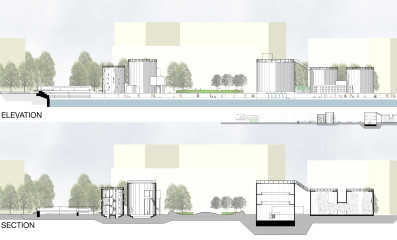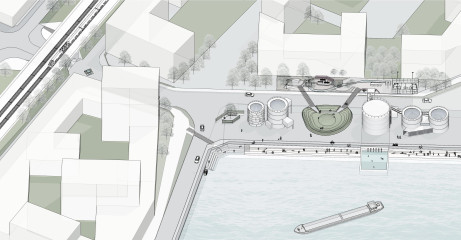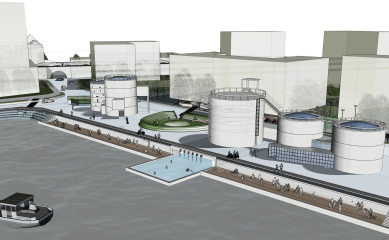The vicinity of railway track L28 in Brussels has innumerable disconnects in the urban fabric in the form of brownfields, pockets of empty wastelands, derelict areas. One of them is the area surrounding Rotor. It is very interesting to observe a microcosm with a rich soundscape, almost exemplary of good soundscape situated adjacent to one with very poor one. There is a lot of potential to remediate the sonic perception of many such microcosms. The poor sonic quality is largely a result of post-industrial trauma. Rotor along with the track L28 is what may be classified as an urban edge in a need of transition from industrial to public as the city expands. Rotor is marked with a sizable mixed community which has very little for itself in the public realm. Poor sonic-spatiality of the area adjoining derelict warehouse and large empty fields dissuade the public from using the space but it is not short of the occasional dog-owners walking their dogs, people parking in these isolated areas to have drink and jolly conversation or even residents who have overcome the insecurity to cross these desolate territories to get to nearby livelier areas. It indicates that that the vicinity may benefit from an urban intervention aimed at enriching the soundscape. The design aim is to direct attention to the meet the need of the people.
Transforming Community to Society
Hearing happens in the periphery of attention. Unlike vision, it is not limited to an angle. We are constantly aware of sounds without being able to articulate them. Each space has a unique sonic effect that is capable of influencing its spatiality. The sono-spatial characteristic influences the way it shapes an urban milieu.
Noise mapping has often been the subject of integrating sound with urban design. However, noise or its intensity is not an adequate parameter for judging the sono-spatial health of a place. As a centre of social and economic activity, the city will always host certain level of noise. What needs to be explored is the topography of sound, its richness, the sonic health of a space. Soundscape is influenced by the built environment in which it produced. Therefore, the discrete shaping of a built environment has the potential to influence the sonic quality of a space. The importance of shaping the built environment to affect its soundscape is discussed below-
The spatial aspect of sonic perception allows a person to translate sonic rendering of a space with meaningful experiences to a sense of BELONGING. On the other hand, it may also to lead to a detachment from the space. We may not be able to articulate its importance but sound plays a primary role in our perception of space. A place with a rich soundscape has a better urban fabric which has a better ability to adapt to transition. But what is rich soundscape? A rich soundscape has an abundance of sounds produced by the corporeal and fauna. The inhabitability of space is determined by the host of activities that take place in it and in turn produce sounds. Macrocosms in which activities take place in the public domain have a distinct soundscape. They are surely more appeasing and inviting to the newcomer. This newcomer has a greater chance of becoming a resident. Same cannot be said about an urban setting with a soundscape that is predominantly industrial and vehicular.








